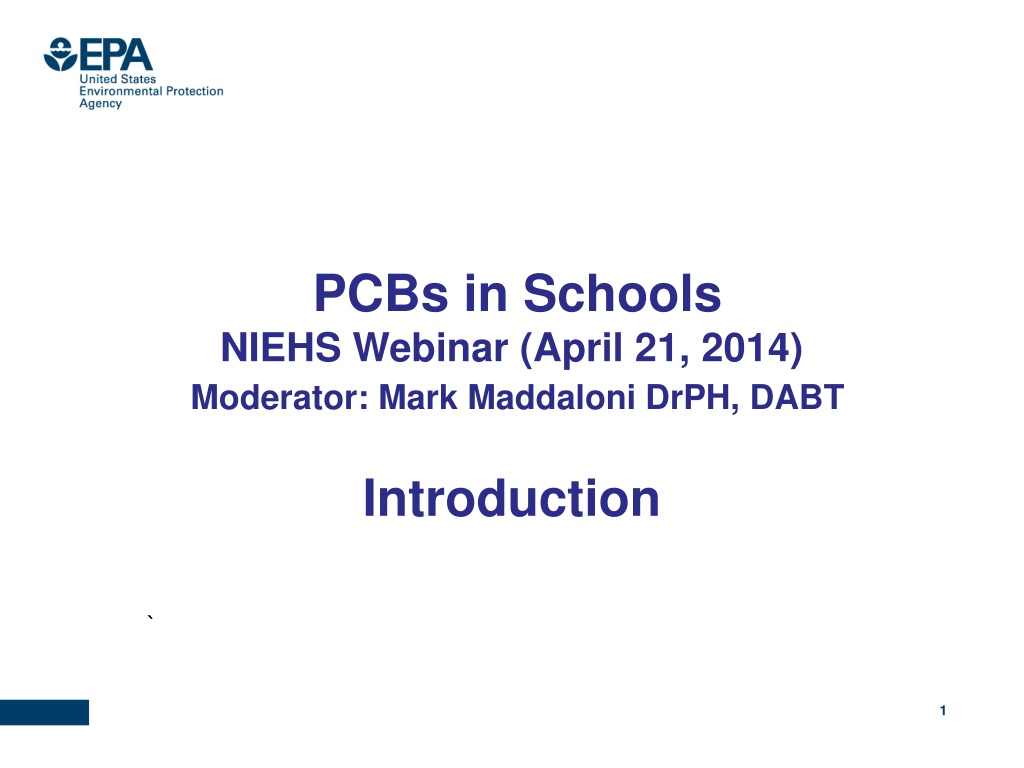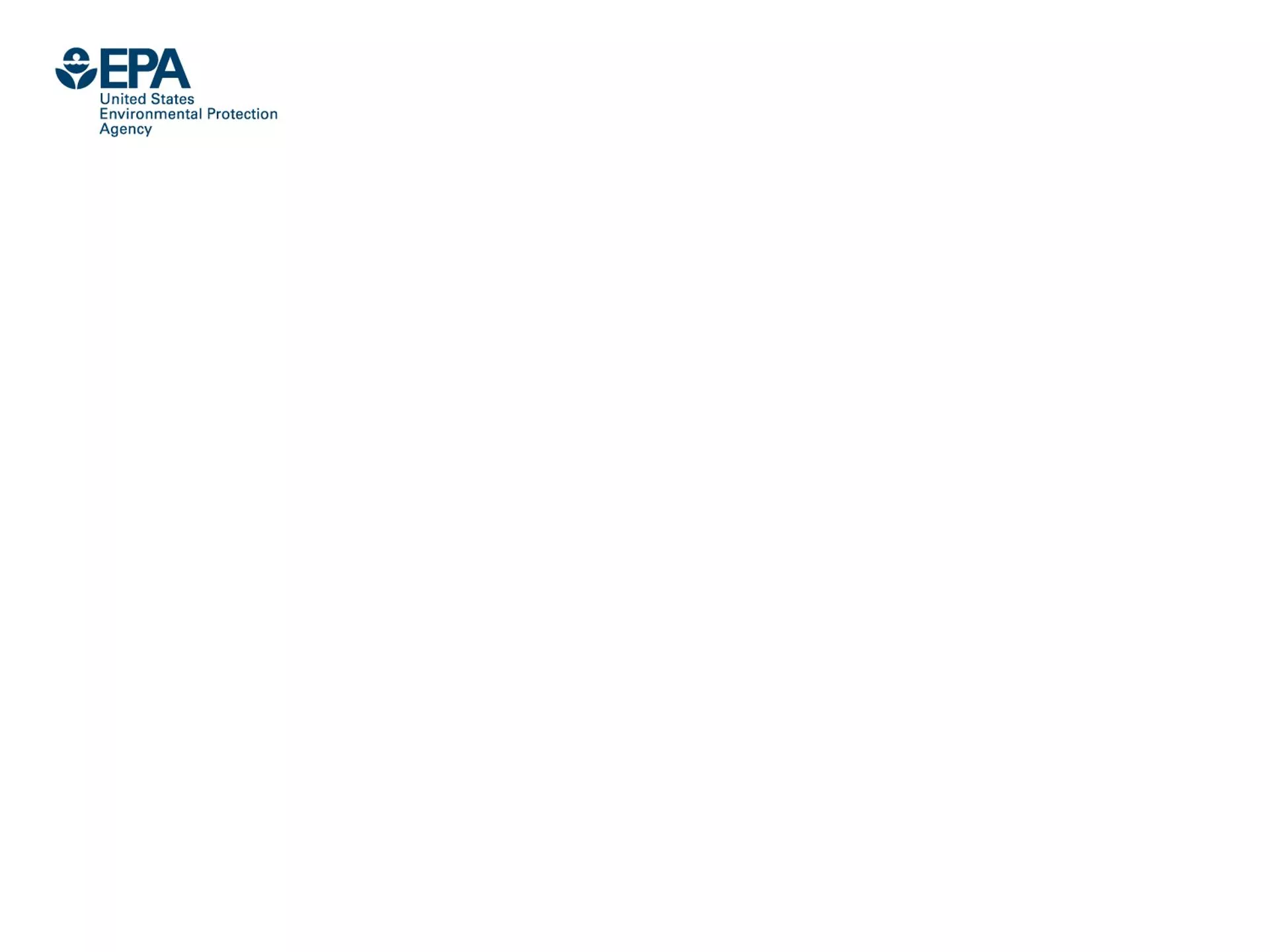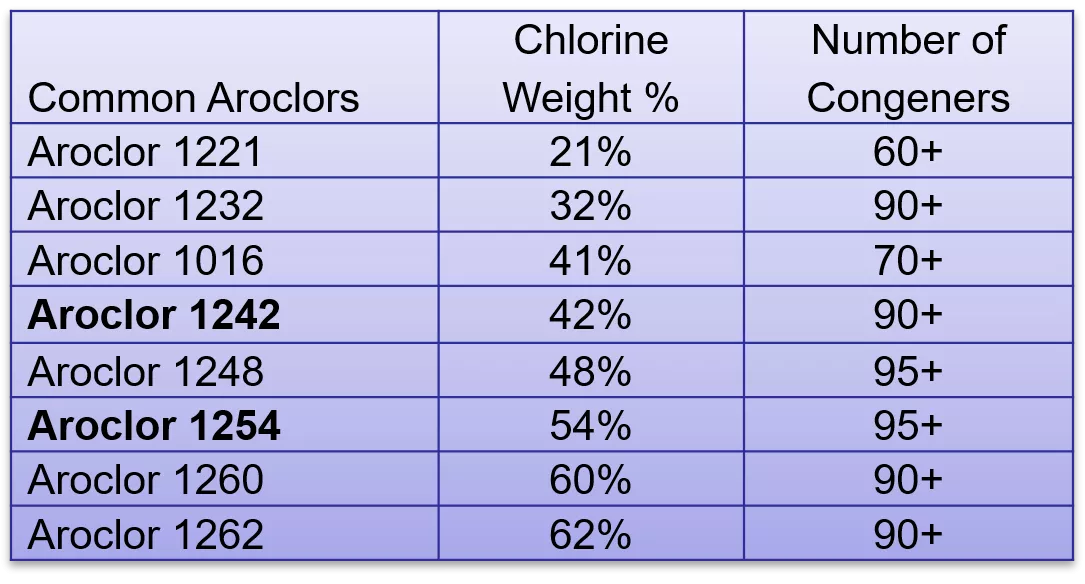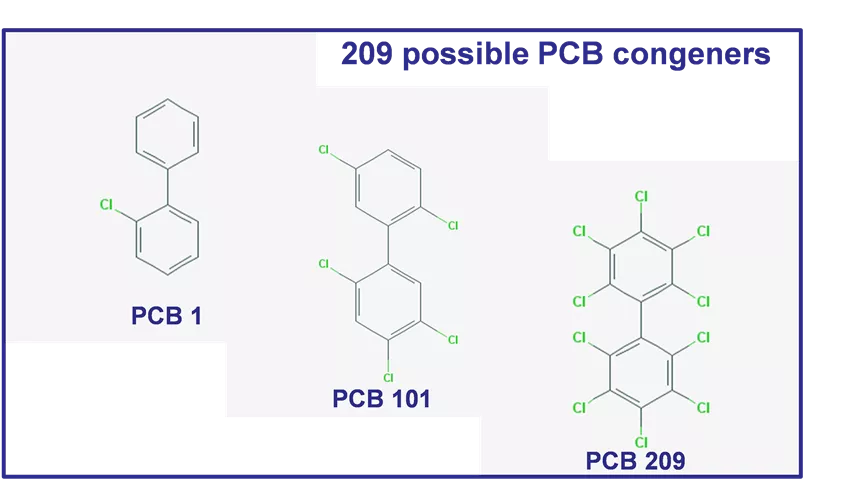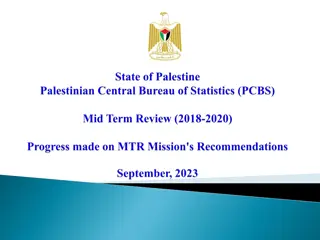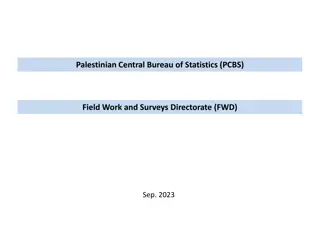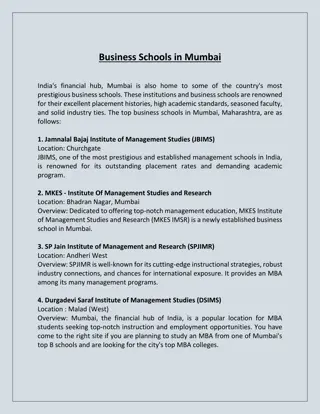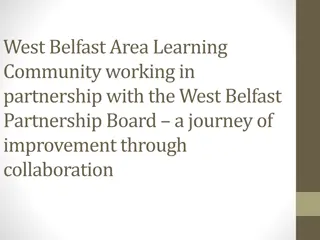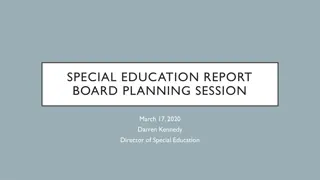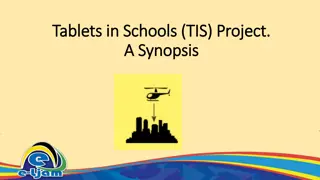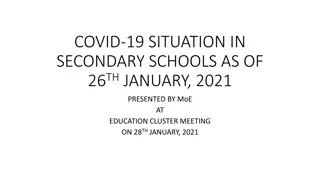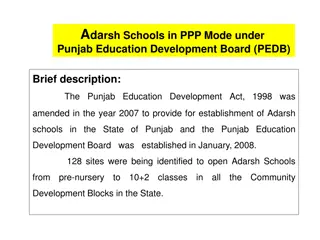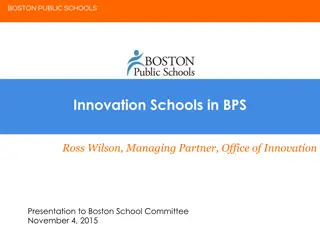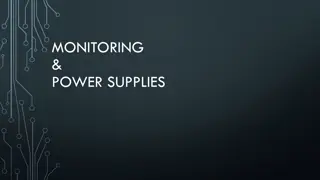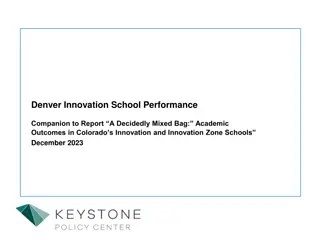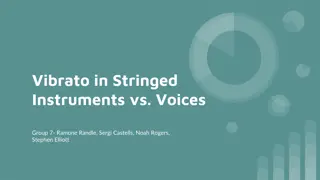PCBs in Schools
Polychlorinated Biphenyls (PCBs) were commonly used in schools built or renovated between 1950 and 1979, potentially affecting over half of the U.S. public school buildings. PCBs can be found in various building materials, posing health risks and environmental implications. Learn about PCB congeners, properties, and their presence in school buildings from historical cases like P.S. 199, shedding light on the importance of PCB awareness and management.
Download Presentation

Please find below an Image/Link to download the presentation.
The content on the website is provided AS IS for your information and personal use only. It may not be sold, licensed, or shared on other websites without obtaining consent from the author.If you encounter any issues during the download, it is possible that the publisher has removed the file from their server.
You are allowed to download the files provided on this website for personal or commercial use, subject to the condition that they are used lawfully. All files are the property of their respective owners.
The content on the website is provided AS IS for your information and personal use only. It may not be sold, licensed, or shared on other websites without obtaining consent from the author.
E N D
Presentation Transcript
PCBs in Schools NIEHS Webinar (April 21, 2014) Moderator: Mark Maddaloni DrPH, DABT Introduction ` 1
Polychlorinated Biphenyls (PCBs) 209 possible PCB congeners PCBs are comprised of many similar semi-volatile organic chemicals called congeners PCB 1 PCB 101 PCBs were manufactured in the U.S. as mixtures of congeners from approx.1929 to 1977 PCB 209 Chlorine Weight % 21% 32% 41% 42% 48% 54% 60% 62% Number of Congeners 60+ 90+ 70+ 90+ 95+ 95+ 90+ 90+ Common Aroclors Aroclor 1221 Aroclor 1232 Aroclor 1016 Aroclor 1242 Aroclor 1248 Aroclor 1254 Aroclor 1260 Aroclor 1262 Aroclor mixtures had the highest U.S. production 2
PCB Congeners in Aroclor Mixtures Aroclor 1242 -Less chlorine - Higher VP >90 PCB congeners in these Aroclor mixtures Aroclor 1242 (or similar Aroclor 1016) often found in light ballast capacitors Aroclor 1254 - More chlorine - Lower VP Aroclor 1254 often found in caulk Differences in amount of chlorine and vapor pressures 3
PCB Properties Electrical insulation Flame-resistance Plasticizer Chemical stability Durability Useful for many applications Persistent in the environment Can vaporize and migrate Persistent in people Toxic effects Implications for human exposure 4
PCBs in School Buildings Possible Uses/Sources For schools built or renovated from about 1950 to 1979 (potentially >50% of U.S. public school buildings) Have been found in schools Fluorescent light ballasts Caulk Window glazing Joint sealant Ceiling tile coatings Spray-on fireproofing material Paints Could be or have been in buildings Motor and hydraulic oil Electrical device capacitors Adhesives and tapes Carbonless copy paper Paints, coatings and inks Floor finish Microscope oil 5
Sentinel School Brief history of P.S. 199 and events leading to the environmental assessment of PCBs: P.S. 199 Elementary (K-6) Age (1963) Enrollment (880) Location (UWS) How it got on the radar screen Herrick (2004, EHP Journal) Study of 24 buildings in Boston area Samples of exterior caulk 13 contained PCBs > 50 ppm (70 36,200 ppm; mean 15,600 ppm) 2005 - Concerned parent in NYC suburb (school window replacement in 2003) Obtained exterior caulk sample (38,000 ppm) Reached out to Daily News 2008 - Caught attention of P.S. 199 (window replacement occurring) Caulk samples obtained high PCB concentrations (> 100,000 ppm) The rest is history
Indoor air sampling at P.S. 199 revealed indoor PCB concentrations orders of magnitude above urban ambient air background (<1 10 ng/m3) ( ATSDR, 2000) Sample Date Before HEPA Filtration After HEPA Filtration After Ventilation No No Ventilation No Ventilation Ventilation Nighttime Daytime Before School Opening 8/26/08 ng/m3 After School Opening Daytime 8/23/08 ng/m3 8/26/08 ng/m3 8/27/08 ng/m3 10/1/2008 ng/m3 1/19/2009 ng/m3 5/9/2009 ng/m3 Jul-2010 ng/m3 Sample Location Unit Cafeteria Classroom 116 230 342 - 224 - 67 140 <53 70 596 689 - Classroom 118 - - - - 81 201 - 1,444 Classroom 202 138 67 714 Classroom 308 - - 323 310 Sample Void(1) 794 Classroom 316 502 578 495 529 253 186 409 Classroom 318 - - 367 251 162 838 Classroom 320 - - 611 346 207 110 - 942 Classroom 328 687 305 177 849 Gymnasium 402 565 550 - 242 325 - 1,347 Outdoor Ambient (east of school) <50 <50 <50 <49 <48 Sample Void (5) ND Stairwell, Main Entrance Second Floor Landing 545 Third Floor North Corridor (First) ND Third Floor North Corridor (Second) 714
